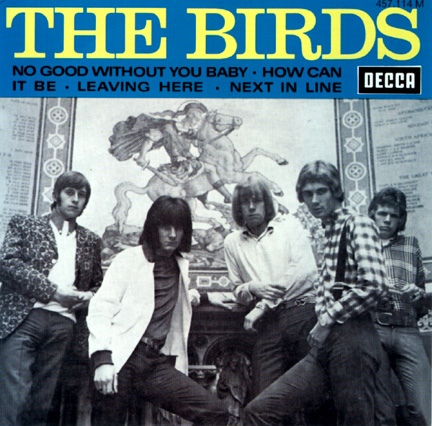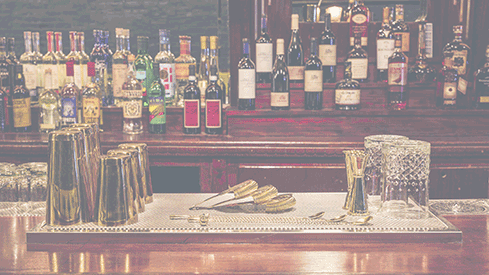
Maybe there’s some truth to the old bromide that what doesn’t kill you makes you stronger. How else to explain how Ronnie Wood, Rolling Stones’ guitarist and all-around party animal, has not only survived but also procreated in his 69th year.
Sex and drugs and rock and roll/Is all my brain and body need/Sex and drugs and rock and roll/Is very good indeed. Ian Drury & the Blockheads
Ronald David “Ronnie” Wood is a rather mundane name for this lad born just west of London on 1 June 1947. The name conveys none of Ronnie’s unconventional upbringing, let alone his subsequent flamboyance. The Woods, you see, were water gypsies, or bargees. They lived on the water and operated river barges. In fact, Ronnie might not have been joking when he said his was the first generation of the family born on dry land. Ronnie showed an early aptitude for art: painting and drawing, and only slightly later started playing guitar in his father’s skiffle band. He entered Ealing College of Art at 16. Ealing should be a familiar institution by now, as we’ve discussed other alums Freddy Mercury and Pete Townshend.
 The Birds, Ronnie Wood (dark hair), and the other Birds
The Birds, Ronnie Wood (dark hair), and the other BirdsIn 1964, Ronnie decided that music was the way to go and joined a neighborhood band, The Birds, as its guitarist. The Birds was a popular R&B group, but had broken up by 1967. In January of 1967, Jeff Beck, fresh out of The Yardbirds, was forming his heavy blues rock group and Ronnie was hired to play rhythm guitar behind vocalist Rod Stewart. Multiple drummers and bassists were tried and discarded before Aynsley Dunbar was hired as the drummer, and Ronnie was moved to the bass. The Jeff Beck Group had its first big successes on US tours arranged by Peter Grant (the so-called “5th member of Led Zeppelin") in 1968 and 1969. The 1968 tour included a date with the Grateful Dead at the Fillmore East. During hiatuses in 1967 and 1968, Ronnie indulged his rhythm guitar side, playing in Santa Barbera Machine Head, a short-lived electric blues group featuring future Deep Purple keyboardist Jon Lord, and The Creation, a slightly longer-lived psychedelic rock band. In early 1969, Ronnie began playing with his brother and the remnants of the Small Faces: Ronnie Lane, Ian McLagan and Kenney Jones, whose lead singer Steve Marriott had walked off at the end of the band’s New Year’s Eve gig. The group was called Quiet Melon, and it recorded four songs and played a handful of gigs during Beck Group downtimes.
 Jeff Beck Group (1967): Clockwise from top: Rod Stewart, Ronnie Wood, Jeff Beck, Aynsley Dunbar
Jeff Beck Group (1967): Clockwise from top: Rod Stewart, Ronnie Wood, Jeff Beck, Aynsley DunbarBy mid-1969, the Jeff Beck Group was unraveling. At one point, Beck fired Ronnie, only to hire him back within weeks. In June and July, Ronnie was in the studio playing on Rod Stewarts’s first solo album. The rest of that backing band included McLagan, Keith Emerson and Martin Pugh. Ronnie finally had enough and quit Beck to join the Small Faces full time. Rod Stewart followed him in short order. Since Ronnie and Rod weren’t quite as vertically challenged as their predecessors, the band changed its name to the Faces. Beck blew his group up just before it was scheduled to appear at Woodstock. Doh!
 The Faces: Ronnie Lane, Ian McLagan, Rod Stewart, Ronnie Wood, Kenney Jones
The Faces: Ronnie Lane, Ian McLagan, Rod Stewart, Ronnie Wood, Kenney JonesIn the early 70s, the Faces were a rowdy, popular and bankable live group. They toured Britain, Europe and the US frequently, as well as ANZ and Japan, playing blues and hard rock a la the Rolling Stones. They were known for their working class attitude, hard drinking, and having a good old time, on and off the stage. The Sex Pistols said they never would have existed were it not for the Faces.
 Rainbow Concert (1973): Ronnie Wood, Eric Clapton, Rick Grech, Pete Townshend
Rainbow Concert (1973): Ronnie Wood, Eric Clapton, Rick Grech, Pete TownshendRonnie was now playing lead, rhythm and slide guitar. He continued to play on Stewart’s solo albums, and began collaborating with others. In 1973, he played on Bowie’s Pin Ups, and appeared with Eric Clapton, Pete Townshend, Steve Winwood, and Rick Grech at the Rainbow Concerts. Ronnie collaborated with Mick Jagger and Keith Richards on “It’s Only Rock ‘N’ Roll” in 1974. At the same time, Ronnie began work on his first solo album, with help from Richards, George Harrison, and Ian McLagan. The album was recorded in the basement studio of Ronnie’s London home, The Wick, which is now Pete Townshend’s home.
 Rolling Stones (1975): Charlie Watts, Keith Richards, Mick Jagger, Ronnie Wood, Bill Wyman
Rolling Stones (1975): Charlie Watts, Keith Richards, Mick Jagger, Ronnie Wood, Bill WymanThe Rolling Stones came calling in 1975, needing a guitar player to replace Mick Taylor on tour. While still a member of the Faces, Ronnie signed on for the job and has been there ever since, playing rhythm guitar, frequent lead swaps with Keith, slide, lap steel, and bass when Jagger plays rhythm and Bill Wyman plays the synthesizer. The Faces announced their breakup at the end of 1975, and in February, 1976, Ronnie became an official member of the Stones. He did not become a full financial partner until 1990.
 The Insects
The Insects Ronnie Wood has continued to perform outside the Stones. He played at The Last Waltz in 1976, with Dylan at Live Aid in 1985, at Rod Stewart’s 1993 MTV Unplugged, on Bo Diddley’s A Man Amongst Men album in 1996, in the group The Insects with the Red Hot Chili Peppers and Ivan Neville at the 2009 MusiCares, and at the 2009 Faces reunion at Royal Albert Hall. Ronnie also continued to produce solo albums, with tours in support backed by the New Barbarians, including Keith Richards, and Ringo Starr. Other collaborations have included Pearl Jam, Aretha Franklin, Prince, and Slash.
On the personal side, Ronnie’s abuse of alcohol and cocaine has been well chronicled. So, too, his many stints in rehab, the last in 2010. He has been married 3 times, the last in 2012 to Sally Humphreys, who is younger than Ronnie’s oldest daughter, and half his age. No matter, the couple was blessed with twin girls this past Monday, May 30. Ronnie now has 6 children and 10 grandkids.

Ronnie’s lifelong interest in drawing and painting has resulted in several exhibitions of his work. Since 2010, he has also hosted an award winning Saturday night radio show on Absolute Radio. He is one of only 18 multiple inductees to the rock HOF, with the Rolling Stones in 1989, and the Faces in 2012.
 Ronnie Wood portrait of himself with Keef
Ronnie Wood portrait of himself with KeefIn March, the Rolling Stones played a historic concert in Havana, Cuba, where they had long been banned. Their next big gig is an appearance at “Oldchella” in Palm Springs, CA, this fall.
Happy Birthday and Congratulations to Ronnie Wood! Long may you survive and thrive!
